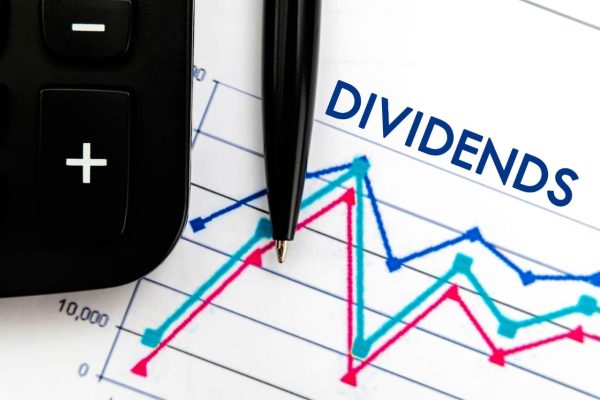Despite the rollercoaster ride stocks are getting in Singapore, dividend investing remains one of the best investment options. For instance, a report from Janus Henderson, a leading asset management firm, shows Singapore was among the countries with record dividend payouts in Q2.
But don’t get confused, as dividend investing differs from income investing. Divided investing involves buying a company’s stocks to receive cash payouts for owning the stock. On the other hand, income investing happens when investors combine all or part of their investments to generate a steady income stream.
So, how does someone in Singapore start investing in dividends? Here is a complete guide to dividend investing, tips, insights, and strategies investors can use to reach their financial goals.
What Is Dividend Investing?
Dividend investing involves buying a company’s stock to receive cash payouts for owning the stock. In short, shareholders are rewarded for investing their money in that company.
Dividends are offered in different forms, including cash, stock, property, liquidating, and special dividends.
Benefits and Risks of Dividend Investing
Just like other stocks, dividend investing has its pros and cons. Here are some of the benefits.
1. Generate Regular Passive Income
Dividend-paying stocks are liked by many investors in Singapore because they offer a steady source of passive income. This especially happens when one invests in a well-established company because their dividends are predictable and consistent.
According to Susan Dziubinski, an investment specialist from Morningstar, “Companies with growing dividends tend to be profitable and financially healthy. They have competitive advantages that allow them to maintain profit margins during inflationary times.”
2. Offer Stability in Volatile Markets
Unlike other investments, dividend stocks are primarily stable, especially when the market is unfavorable. This is because companies that pay dividends are usually stable regarding their earnings and cash flows. This is beneficial since their healthy financial status cushions them by mitigating potential losses.
3. Offer Compounding Returns
Investing in a dividend stock is beneficial as it offers compounding returns, thus increasing the capital gains. This happens when an investor reinvests the dividend to the same stocks.
Also, investors can generate more dividends when they purchase additional company shares. The compounding effect accelerates dividend growth and overall investment growth over time.
For instance, if you invest S$10,000 in a dividend-paying stock with an annual yield of 5%. In the first year, you would receive dividends worth S$500 (10,000*0.05). And since these are compounding returns, you don’t cash out but reinvest the dividends received by buying more shares of the same stock. Therefore, in the second year, you will have the initial investment of S$10,000 plus the additional shares purchased by the S$500 dividends you received the previous year. So, if everything else remains the same, at the end of the second year, you will have S$525 as a dividend (10,500*0.05).
4. Preserve Purchasing Power of Capital
Dividends help investors to preserve the purchasing power of their capital during inflation. Inflation is known to reduce the value of returns, especially when the company’s dividend yield is lower.
With a higher dividend yield, your investment will return a profit that’s more than the inflation, which means the investor will not suffer losses.
Risks of Dividend Investing
Some companies claim to offer high dividend yields, so they over-value their stocks. When facing fundamental or fiscal crises, companies may reduce the dividend value or fail to pay.
Top Dividend Stocks
Here is a comparison table of our top 9 dividend stocks. This snapshot of key metrics of the market leaders will help you make an informed investment decision.
| Company Name | Ticker | Industry | Dividend Yield | |
|---|---|---|---|---|
| Berry Corp | BRY | Oil & Gas Exploration & Production | 14.35% | |
| Big 5 Sporting Goods Corp | BGFV | Sporting Goods Retail | 14.07% | |
| Dynex Capital Inc | DX | Mortgage Investment | 13.25% | |
| Chicago Atlantic Real Estate Finance Inc | REFI | Real Estate Finance | 13.14% | |
| Apollo Commercial Real Estate Finance Inc | ARI | Real Estate Finance | 12.74% | |
| Arbor Realty Trust Inc | ABR | Real Estate Investment Trust | 12.44% | |
| International Seaways Inc | INSW | Oil & Gas Midstream | 12.18% | |
| Civitas Resources Inc | CIVI | Oil & Gas Exploration & Production | 11.13% | |
| Tredegar Corp | TG | Plastics Products Manufacturing | 10.97% | |
Analyzing Dividend Stocks
Analyzing dividend stocks is essential as they are not created equally. While an investor may be tempted to invest in dividend stocks with higher dividend yields, using the right strategy is essential.
Dividend investors should understand that the stock market keeps shifting, and the returns may change. Before investing in a stock dividend, one should research and evaluate the company’s profits, performance, and financial health. Your chosen company should have healthy cash flow, solid financials, and a proven track record of dividend growth.
Investors should be careful when investing in companies with the highest dividend-paying stocks, as they are susceptible to dividend traps. A dividend trap happens when a company lures investors with high, unsustainable payouts.
Although the dividend payout is lucrative, there is no guarantee that the returns will be sustainable. Such companies can reduce and cut out the returns and put their principal amount at risk.
Most investors use retrospective financial metrics to gauge a company’s earnings and future performance. While retrospective financial metrics are a good approach, it’s essential to consider the basic business fundamentals.
As a dividend investor, you should focus on companies with low leverage, clear competitive advantage, and a strong management team. Such companies are better equipped and have the potential for consistent earnings growth.
Creating a Dividend Investing Plan
All dividend investors should have a dividend investing strategy, as this will help them achieve long-term success. Investors seeking to invest in dividend stocks must understand their risk tolerance before committing their money. This allows them to determine the amount they want to allocate to dividend stocks.
After determining the portfolio allocation and risk tolerance, investors should select the investment vehicle they will use for their investing plan. Common investment tools include mutual funds, exchange-traded funds, or individual stocks.
Your investment instrument will depend on the organization’s financial health, average dividend yield, and company history and growth. A good dividend investing strategy helps investors have reliable dividend yields and diversify their investments.

Common Dividend Investing Strategies
There are numerous dividend investing strategies, but the most common include dividend income investing, dividend value investing, and dividend growth investing. These strategies work well if the investor focuses on companies with consistent dividend growth over those with high dividend yields.
However, you should not only focus on these strategies as a company may have a high dividend yield and also have a healthy financial record.
Tax Benefits of Dividend Investing in Singapore
Singapore is attracting investors from all over the world because of its favorable tax regulations. This country has a legal framework that prohibits all local companies from paying taxes out of investor’s capital.
Singapore’s Income Tax Act only allows taxation on income, and in this case, dividends are recognized as tax. So, investors are only subjected to personal income tax.
Additionally, this country doesn’t have a withholding tax on dividends, but the tax applies to some types of interest and royalties. Foreign investors take advantage of this exemption and can benefit from tax exemption schemes, especially if the dividends paid are low.
Investing in Blue-Chip Companies & REITs for Dividend Income
Most investors like investing in Blue-Chip Companies and REITs as they are well-established and offer the best dividend stocks. These companies have large market capitalization and offer growth potential. This means they have reliable financial performance, and the investor is guaranteed a high dividend income.
Investors use the dividend payout ratio and the dividend yield to evaluate their dividend income. The dividend yield is calculated by dividing the annual dividends per share by the price per share. Remember, most Blue-Chip companies that pay dividends tend to have a very high dividend payout ratio.
The dividend yield ratio reduces when the price per share increases and vice versa. However, the dividend yield ratio reduction can happen even when the stock has improved substantially.
Higher Yields Do Not Equate to Better Investments
Some misconceptions exist that higher-yield investments are better, and investors should only focus on them. This misconception is partially true as they attract better dividend payments.
However, investors should be careful as high dividend yields may fail to be realized, especially when the company faces financial problems.
For example, Company A trades at $50 and pays a 5% yield annually. It then experiences a negative shock that sends its stock to $25. Company A is supposed to pay a $2.50 annual dividend even after the shock and will pay the dividends at a 10% dividend yield. This loss is magnificent, and Company A may fail to sustain its obligations.
Reinvesting Your Dividends and Diversification
Dividend reinvestment is an excellent way to enhance capital appreciation. With this investment strategy, investors reinvest their returns by buying more shares in the company.
There are two major ways an investor can reinvest their dividends. This includes setting up a dividend reinvestment plan or using a brokerage account to reinvest their dividend payouts.
Most companies in Singapore offer a dividend reinvestment plan with flexible options. This allows investors to either reinvest full or part of their returns. Such companies allow investors to buy new stocks with their returns, and this helps them to compound their gains.
Investors also have an option to reinvest their shares with a broker. In this case, an investor sets up an account with a brokerage firm and can automatically reinvest in funds that pay dividends. This option is an excellent alternative for investors wanting to reinvest in fractional shares to generate income.
Tips for Picking Quality Dividend Stocks
The right investment strategies help investors generate income and improve their capital gains. Here are some tips investors should consider to help them pick only quality dividend stocks.
1. Invest in Mid-to-Large Stocks
Investors should look for mid-to-large stocks with stable profits and cash flows. In most cases, companies within this range have already exhibited positive and consistent earnings for years, so they have lower risks.
2. The Dividend Payout Ratio Is 50% or More
A high dividend payout ratio is an indicator that the company has a sustainable dividend payout stream. This means the company is already established and stable and is not looking for aggressive growth. So, most of its profits are returned to the shareholders.
3. The Company Has a Track Record of Consistent Dividends
The company one invests their dividend into should have a stable and long track record of growing dividends and dividend issuance programs. Ensure you check if the company has been paying a growing dividend for the past 5 to 10 years.
4. Sustainable Company Fundamentals
Checking the overall health of a company is vital as this determines dividend projections in the future. Avoid companies with declining profits, revenue, and cash flow, as they cannot sustain their dividend payment program in the long run.
Avoiding Common Dividend Investing Mistakes
Most investors, especially beginners, make the mistake of investing their dividend stocks in companies with higher returns. Although investing in such companies is not bad, the return may fail to be realized, especially when the company gets into financial problems.
Investors should avoid these mistakes by focusing on the company’s financial health. Instead, they should focus on companies with low leverage, clear competitive advantage, and a strong management team. This is because such companies are better equipped and have the potential for consistent earnings growth.
Related Questions
1. Are Dividends a Good Investment?
Yes, dividend stocks are good investments. Dividend investing helps investors get a steady source of passive income and capital appreciation.
2. How Much to Invest for a $1,000 Dividend per Month?
Investors should invest $600,00 in a company with a 2% annual yield. This amount can generate around $1,000 per month or $12,000 per year in dividends.
3. How Do I Make $500 a Month in Dividends?
You can make $500 monthly if you invest $250,000 in companies with low-yielding stocks. If investing in a company with high-yielding shares, you must invest $83,333.
4. What Are the Downsides of Dividend Investing?
Some companies claim to offer high dividend yields, so they over-value their stocks. When facing fundamental or fiscal crises, such companies may reduce the dividend value or fail to pay.
Closing
Dividend investing is among the best ways to build wealth and earn a steady passive income. Although this is a good venture, it’s important to assess the overall health of a company as this determines future dividend projections.
Key Takeaways
- Some benefits of dividends include a source of regular passive income, offering stability in volatile markets, offering compounding returns, and preserving the purchasing power of capital.
- An investor must analyze the dividend stocks, which can be done by evaluating the company’s profits, performance, and financial health.
- Diversifying and reinvesting your dividends is important as this helps mitigate risks and enhance capital appreciation. This can be achieved by setting up a dividend reinvestment plan or using a brokerage account to reinvest their dividend payouts.
Are you in Singapore looking for money to invest or for personal use? At Instant Loan, we will provide you with the best personal loan offers with manageable repayment plans. Contact us today, and we will help you choose a plan that suits your financial needs.








